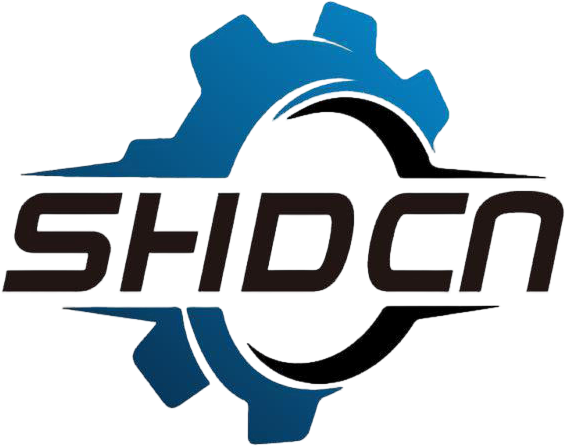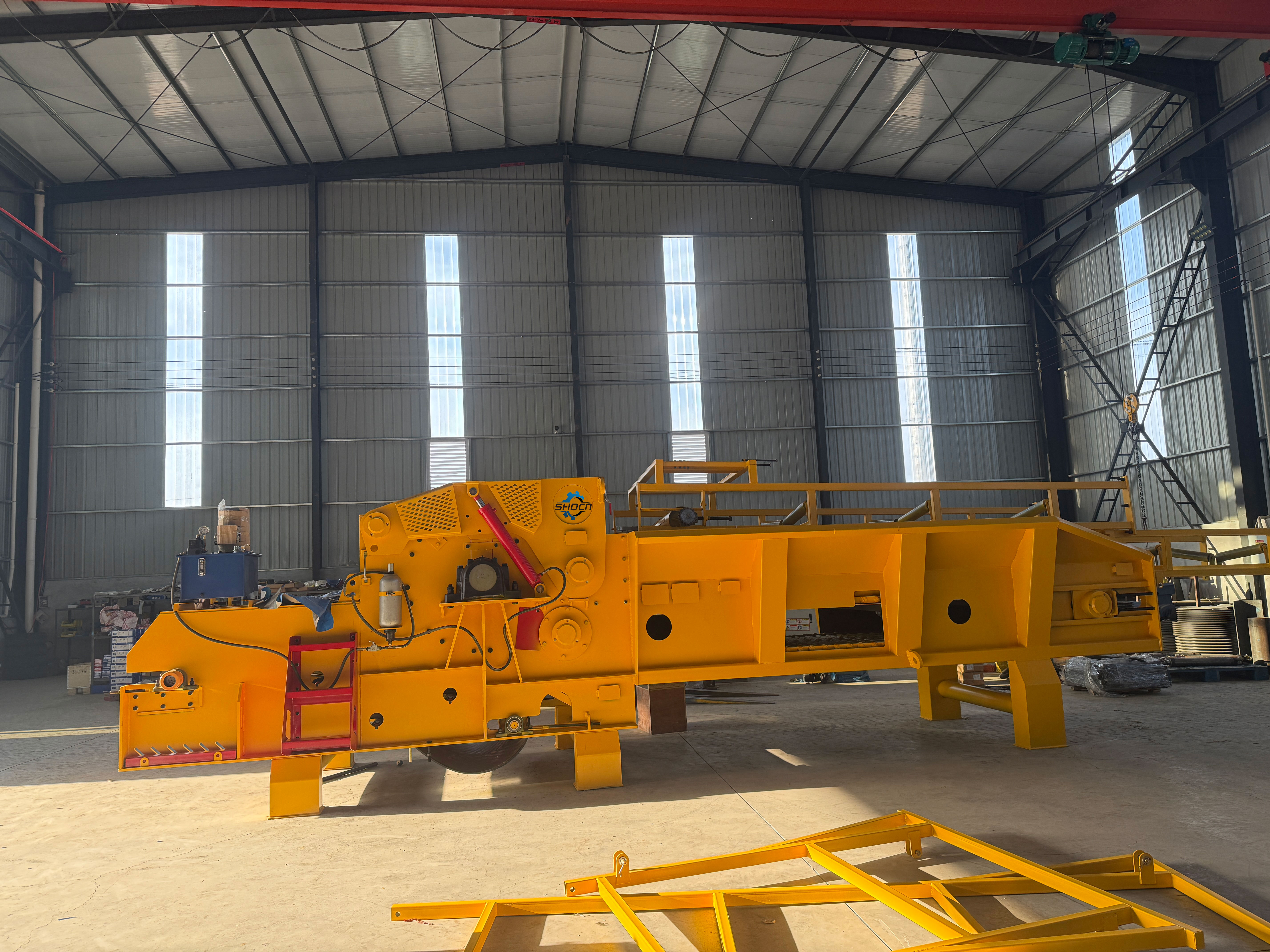Daily Operational Checks to Ensure Wood Chipping Machine Reliability
Industrial wood chipping machines demand rigorous daily inspections to maintain productivity and prevent unscheduled downtime. These proactive checks safeguard both equipment longevity and operator safety while optimizing chip quality.
Performing Safety and Visual Inspections Before Startup
Begin each shift with a 5-minute inspection of critical components:
- Examine blades for cracks or abnormal wear
- Verify hydraulic hose integrity and fastener tightness
- Test emergency stop functionality
- Clear the work zone of obstructions
Operators should document findings using standardized checklists and address minor issues immediately. Lockout/tagout protocols must be enforced during these inspections to prevent accidental startups.
Cleaning Debris After Use to Prevent Overheating and Clogs
Residual wood fibers and sap accumulate rapidly during operation, increasing friction in feed systems by up to 34% (Industrial Processing Journal, 2023). Post-shift cleaning should:
- Blow out rotor chambers with compressed air
- Scrape hardened residue from anvil surfaces
- Flush discharge chutes with biodegradable cleaners
- Wipe down lubrication points
This routine reduces combustion risks in diesel-powered units and maintains optimal airflow in electric models.
Checking Fuel, Oil, and Hydraulic Fluid Levels Daily
Fluid monitoring prevents three major failure modes:
| Fluid Type | Check Method | Tolerance |
|---|---|---|
| Hydraulic | Dipstick | ±5% of max line |
| Engine Oil | Sight glass | Never below min |
| Diesel Fuel | Tank gauge | 25% reserve minimum |
Top up fluids using manufacturer-approved grades, and always purge air from hydraulic lines after servicing. Contaminated fluid samples (>3% particulate) warrant immediate system flushing.
Blade Maintenance for Peak Wood Chipping Efficiency
The Role of Sharp, Aligned Blades in Consistent Chip Quality
Keeping blades in good condition is really important when it comes to getting consistent wood chips and maintaining production levels in industrial settings. When blades are sharp, they actually consume around 20% less energy than their dull counterparts. Plus, having them properly aligned stops the cutting parts from wearing out unevenly over time. On the flip side, if blades aren't aligned right or start getting dull, they tend to leave rough edges on the wood material. This not only creates more waste but also puts extra strain on the machinery's engine. For anyone running these operations, checking blade alignment once a week makes sense. Grab a dial indicator tool and make sure those mounting bolts are tightened according to what the manufacturer recommends. Small maintenance steps like this can save money in the long run and keep everything running smoothly.
Recommended Frequency and Methods for Blade Sharpening
Most industrial wood chippers need their blades sharpened roughly every 8 to 10 hours of actual running time if they're going to keep cutting properly. For best results, professionals usually reach for diamond coated grinders or those fancy CNC guided systems that help maintain that crucial bevel angle around 30 to 35 degrees. Trying to do it manually just doesn't cut it most times these days, and we've seen way too many blades fail early because of uneven edges from hand sharpening. Once the main sharpening is done, don't forget to take care of those pesky burrs with a good quality honing stone. This simple step makes all the difference in reducing unnecessary friction while the machine is actually working, which means better performance and longer blade life overall.
Inspecting for Wear and Replacing Damaged Blades Promptly
Blades should undergo visual and tactile inspections after each shift. Look for:
- Surface cracks: Indicate metal fatigue and risk of catastrophic failure
- Edge chips: Larger than 2 mm reduce cutting performance by 15–20%
- Corrosion pits: Accelerate wear in high-moisture environments
Replace blades when cutting edges lose more than 10% of their original width or show visible warping. Delayed replacement increases bearing load by 30% and raises the likelihood of unplanned downtime.
Balancing Blades Post-Sharpening to Minimize Vibration
Blades should undergo visual and tactile inspections after each shift. Look for:
After sharpening, dynamic balancing becomes really important because it helps fix those pesky issues that arise when too much material is removed from one side of a blade. You'll need to get yourself a decent blade balancing fixture to pinpoint which edge is carrying more weight. Once you've identified the spot, gently remove some of the metal near the base. When blades aren't properly balanced, they tend to create a lot of vibrations, which can actually make the drive systems wear out two to three times faster. This is definitely something you want to avoid. And don't forget, including laser alignment in your seasonal maintenance routine is a great idea, as it can prevent potential internal rotor problems that may not be immediately obvious.
Lubrication and Drive System Care to Extend Machine Life
Greasing Bearings to Enhance Longevity
Greasing bearings helps to extend their lifespan and improves the overall performance of the wood chipping machine. It is essential to use high-temperature grease on pivot points and rollers daily, especially for joints exposed to sawdust. In environments where temperatures can exceed 200°F, the use of high-performance synthetic lithium-complex greases can prevent thermal breakdown and ensure optimal operation.
Maintaining Belt Tension and Inspecting for Wear
Proper belt tension is crucial in preventing engine power waste. Loose belts can lead to 12–15% loss of engine power due to slippage, while belts that are too tight can place excessive stress on the components. Regularly inspect your belts for any signs of damage or wear and replace them if necessary. Check for cracks deeper than 1/4 inch, glazing on the inner surface, and a loss of more than 10% of width. Regular maintenance can prevent significant issues and prolong the machine's operation life.
Keep in mind that ensuring a well-maintained wood chipping machine will not only extend operational longevity but also improve safety and efficiency. Implement routine checks and balanced maintenance to achieve optimal machinery performance, reduce risks of accidents, and minimize unexpected breakdowns.
FAQ
Why is it important to inspect wood chipping machines daily?
Daily operational checks help maintain the machine's productivity, prevent unplanned downtimes, and ensure safety while optimizing chip quality.
How often should wood chipper blades be sharpened?
Most industrial wood chippers require their blades to be sharpened roughly every 8 to 10 hours of operation to maintain cutting efficiency.
What steps should be taken during post-shift cleaning?
Post-shift cleaning should include blowing out rotor chambers with compressed air, scraping hardened residue from anvil surfaces, flushing discharge chutes with biodegradable cleaners, and wiping down lubrication points.
How should fluid levels be checked in a wood chipping machine?
Check hydraulic fluid with a dipstick (±5% of max line), engine oil through a sight glass (never below min), and diesel fuel reserve should be a minimum of 25% according to the tank gauge.
Why is blade alignment essential in wood chippers?
Proper blade alignment prevents uneven wear, reduces energy consumption, and minimizes unnecessary strain on the machinery.
Table of Contents
- Daily Operational Checks to Ensure Wood Chipping Machine Reliability
- Blade Maintenance for Peak Wood Chipping Efficiency
-
Lubrication and Drive System Care to Extend Machine Life
- Greasing Bearings to Enhance Longevity
- Maintaining Belt Tension and Inspecting for Wear
- FAQ
- Why is it important to inspect wood chipping machines daily?
- How often should wood chipper blades be sharpened?
- What steps should be taken during post-shift cleaning?
- How should fluid levels be checked in a wood chipping machine?
- Why is blade alignment essential in wood chippers?

